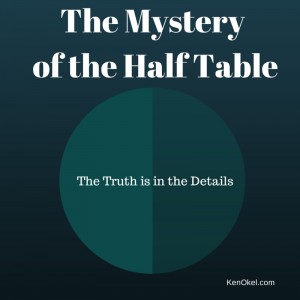 Most misunderstandings happen as a result of our not asking enough questions and making assumptions. A funny example of this happened in the days before I was to give a speech to a group of executives.
Most misunderstandings happen as a result of our not asking enough questions and making assumptions. A funny example of this happened in the days before I was to give a speech to a group of executives.
Part of my preparation for the event sees me try to find out as much as I can about the room where I will be speaking. I want to know the shape of the room, whether I will be on a platform or on the floor, and the kind of microphone I’ll be using. All of these factors help me customize a presentation to the audience.
As I sometimes like to move through the audience, I needed to find out how the group would be seated.
“They will be sitting at circular, half tables,” the meeting planner told me.
Immediately, I start to envision a new kind of table. At a regular circular table, some of the members of the audience have to turn their chairs in order to see the action at the front of the room. I realize that a half table removes this challenge. “Brilliant!” I said to myself.
This scenario made sense in my mind but not in reality. When I showed up the meeting, there were no half tables. There were full circular tables, where the audience was only seated around the half that faced the main stage.
Half table referred to a seating plan and not a piece of furniture. In hindsight, this makes sense as it would be hard for a conference center to stock both full and half tables. It would be more trouble than it is worth to have half tables.
My misunderstanding is something I can laugh about. I had an opportunity to ask a followup question about the tables, to the meeting planner, and I didn’t take it. A simple question could have made everything clear. Instead, I relied on my imagination for an answer.
How many times do we fail to ask a followup question that could fill in the gaps of our understanding? My mistake only cost me some pride. Often, a lack of knowledge hits you in the wallet.
If you’re not sure of something, then ask about it. Guessing is risky and the price of a misunderstanding can be high.






